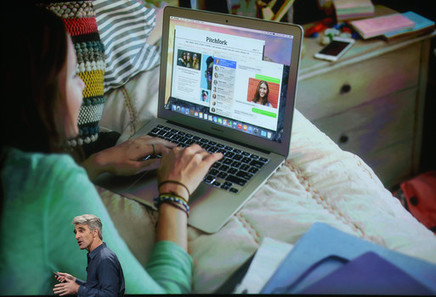To contend with the rise of online shopping, brick and mortar stores have been using digital technology to create greater in-store experiences.
Source: www.examiner.com
Excerpt: Augmented reality allows the customer to virtually try on clothes: Many retailers have unlocked the potential of augmented reality in recent years. The technology overlays virtual information onto the real world using smartphones or tablets. It has the ability to bring an image, label or display to life meaning customers can engage with stock on an entirely new level.
For example, Topshop have created augmented reality fitting rooms to enhance the shopping experience by allowing shoppers to try on clothes virtually without having to undress. The built-in camera tracks a person’s body and superimposes a 3D model of the garment on the customer.
From the retailers side, exhibition stand providers Skyline Whitespace have pointed out that augmented reality can also be used to analyse consumer behaviour. Any device that encourages customer engagement has the potential to gain valuable data. This data in turn can be used in future marketing campaigns and to refine advertising.
Interactive OOH advertising engages the senses: Out Of Home (OOH) advertising refers to ads that reach consumers while they are, unsurprisingly, outside the home such as posters and billboards. OOH is often regarded as the most effective method of marketing. Research from the Outdoor Media Centre found that 88% of shoppers notice outdoor ads and 72% can be tempted into buying the product or service advertised.
OOH advertising is becoming increasingly interactive as more focus is placed on customer engagement. 44% of UK adults think that digital poster screens that allow them to “click and collect purchase” would be useful to retailers. This has led some to wonder whether we could see fast food drive-through windows replaced by interactive posters and Amazon order screens on the high street.
Food manufacturer McCain installed bus shelter posters that featured 3-D fibreglass baked potatoes. The potatoes heated up and emitted the scent of cooking potatoes with the press of a button. Having grabbed the attention of those waiting at the bus shelter, the posters dispensed coupons to buy the product at discount price.
Outdoor marketing is also moving away from the traditional poster. Creative production agency REWIND created an interactive vending machine after being asked by Holiday Autos to capture the essence of summer. The vending machine was re-coded and filled with bottles of summer-related scents. A credit-based payment system was developed which allowed consumers to tweet the machine to gain usable currency.
Beacons alert customers to promotional offers: Beacons work by sending small packets of data to smartphones via Bluetooth. They can be used to trigger things like push messages, app actions, and prompts. Originally used to alert customers to discounts within a store, beacons are becoming more versatile in the ways they can enrich customer experience. Take for example a new customer who is unfamiliar with the layout of a store. Shoppers can download the shop’s app, enable beacons and discover where to find particular items via beacon information sent to their mobile device.
Fashion magazine Elle is at the forefront of retail beacon technology. It displays a selection of their “top picks” as selected by their editors on mobile apps. A consumer who uses the app gets a push notification if they are within distance of a store that stocks one of the top picks. If the customer opens the notification and goes to the store, they receive another notification with a promotional offer.
Smart shelves prevent stock from running out: Finding that a product is sold out is one of the most frustrating occurrences for both the consumer and retailer. Out-of-stock shelves cost retailers 4% of their annual revenue. This is why many stores, particularly supermarkets, are turning to smart shelf technology.
With smart shelves retailers can monitor inventory in real time using embedded sensors. Employees are alerted when stock is running low or when a theft has been detected. Product prices also change according to promotions, ensuring accurate pricing for customers and saving time for employees who are no longer required to reprice various items.

